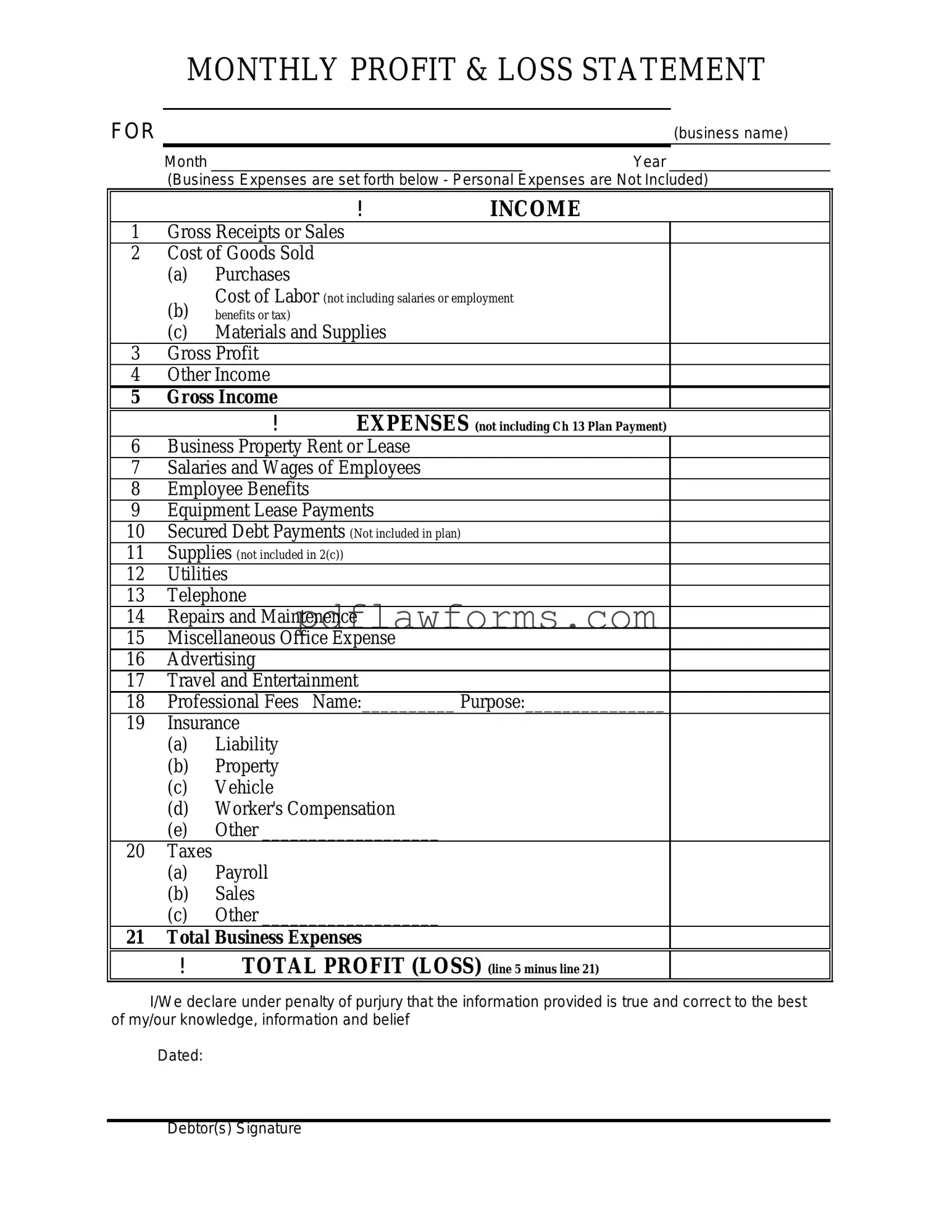The Profit and Loss form, often referred to as the P&L statement, serves as a crucial financial document for businesses of all sizes. This form provides a clear snapshot of a company's revenues, costs, and expenses over a specific period, typically a month, quarter, or year. By detailing income from sales and subtracting the costs associated with generating that income, the P&L helps to determine whether a business is operating at a profit or a loss. Major components of the form include total revenue, cost of goods sold (COGS), gross profit, operating expenses, and net income. Each section plays a vital role in illustrating the financial health of the business. For instance, understanding gross profit allows owners to assess how efficiently they are producing goods or services. Meanwhile, operating expenses provide insight into the costs necessary to run the business, which can inform strategic decisions moving forward. Overall, the Profit and Loss form is an indispensable tool for business owners, investors, and stakeholders alike, offering a comprehensive overview of financial performance and guiding future planning.
